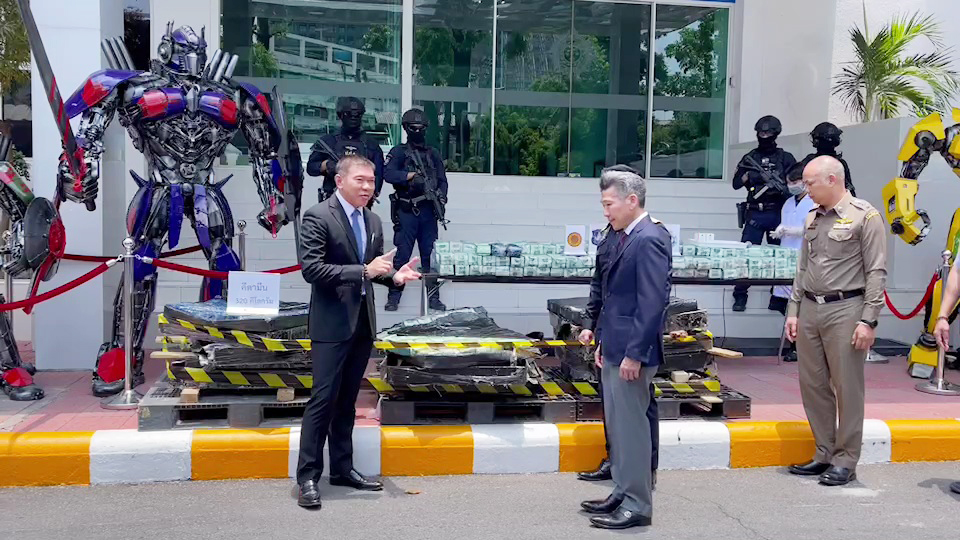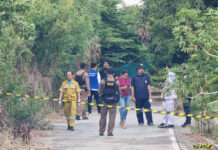
BANGKOK – A press release from the Office of the Narcotics Control Board (ONCB) on Friday revealed the seizure of 320 kilograms of ketamine hidden in the bases of giant robots. The drugs were destined for Taiwan and were intercepted during shipment by sea. A Thai shipper has been arrested in connection with the case.
Pol. Lt. Gen. Phanurat Lhakbun, Secretary-General of the ONCB, stated that the seizure was the result of cooperation between the Seaport Interdiction Task Force (SITF) and the Australian Federal Police (AFP) under Operation Task Force Storm, aimed at combating drug trafficking, money laundering, and transnational crimes.
The operation stems from an earlier case in which Australian authorities seized 108 kilograms of methamphetamine hidden in a food processing machine shipped from Thailand on March 12, 2024. Thai officials traced the shipment to a Thai woman who sent a shipment of robot figurines to Taiwan on April 24. The shipping costs for this shipment amounted to 180,000 baht, raising suspicions that drugs were hidden in the goods.
The ONCB officers, in cooperation with the Narcotics Suppression Bureau of the Royal Thai Police, the Customs Department and the Ministry of Justice Investigation Bureau (MUB) of Taiwan, investigated the shipment and discovered 320 kilograms of ketamine hidden in the bases of the robots. On April 25, they arrested the shipper who had hidden the drugs. The suspect admitted that he had received instructions from a Laotian woman to transport the goods.

Between 2022 and 2024, SITF intercepted a total of 4 tons of methamphetamine, over 2 tons of ketamine, and 265 kilograms of heroin destined for Australia, Taiwan, Malaysia, Hong Kong, and other third countries.
Recently, drug trafficking networks have been observed using private/personal ports in the eastern region of Thailand, including Chanthaburi, Rayong, Trat and Chachoengsao, for drug smuggling. They load the drugs onto cargo vessels (fishing boats, longtail boats, speedboats) and transport them to large ocean-going vessels waiting in international waters for onward transportation to third countries.
In this way, large quantities of drugs can be transported and the international waters used for transshipment are not under the sovereignty or control of any state, which facilitates drug trafficking by sea. As a result, drug trafficking by sea is likely to increase and needs to be closely monitored.

















































